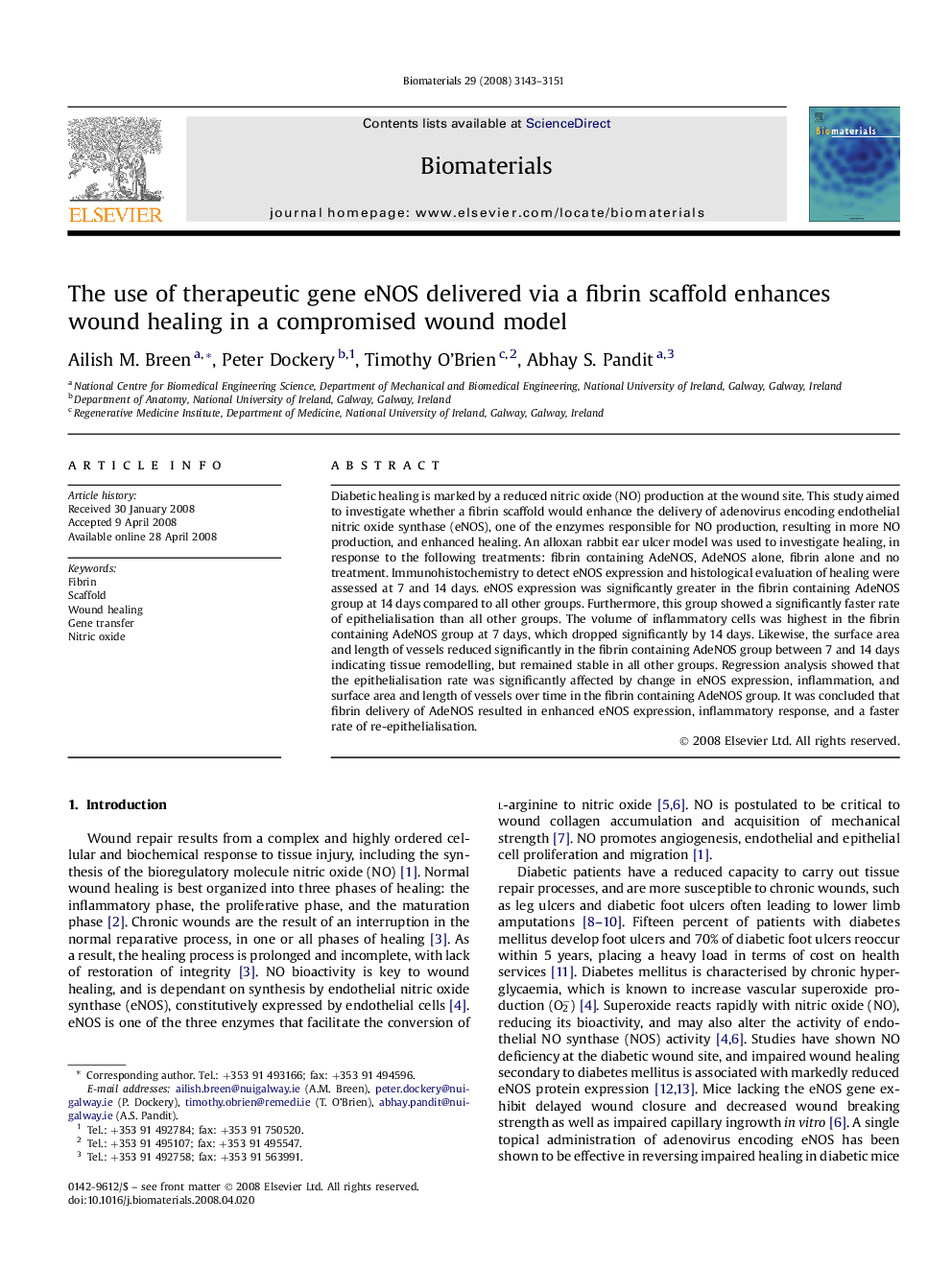| کد مقاله | کد نشریه | سال انتشار | مقاله انگلیسی | نسخه تمام متن |
|---|---|---|---|---|
| 9470 | 631 | 2008 | 9 صفحه PDF | دانلود رایگان |

Diabetic healing is marked by a reduced nitric oxide (NO) production at the wound site. This study aimed to investigate whether a fibrin scaffold would enhance the delivery of adenovirus encoding endothelial nitric oxide synthase (eNOS), one of the enzymes responsible for NO production, resulting in more NO production, and enhanced healing. An alloxan rabbit ear ulcer model was used to investigate healing, in response to the following treatments: fibrin containing AdeNOS, AdeNOS alone, fibrin alone and no treatment. Immunohistochemistry to detect eNOS expression and histological evaluation of healing were assessed at 7 and 14 days. eNOS expression was significantly greater in the fibrin containing AdeNOS group at 14 days compared to all other groups. Furthermore, this group showed a significantly faster rate of epithelialisation than all other groups. The volume of inflammatory cells was highest in the fibrin containing AdeNOS group at 7 days, which dropped significantly by 14 days. Likewise, the surface area and length of vessels reduced significantly in the fibrin containing AdeNOS group between 7 and 14 days indicating tissue remodelling, but remained stable in all other groups. Regression analysis showed that the epithelialisation rate was significantly affected by change in eNOS expression, inflammation, and surface area and length of vessels over time in the fibrin containing AdeNOS group. It was concluded that fibrin delivery of AdeNOS resulted in enhanced eNOS expression, inflammatory response, and a faster rate of re-epithelialisation.
Journal: Biomaterials - Volume 29, Issue 21, July 2008, Pages 3143–3151